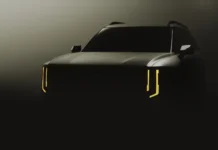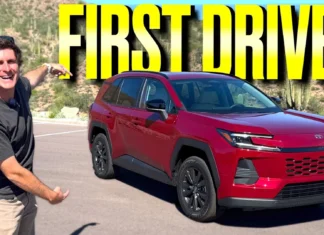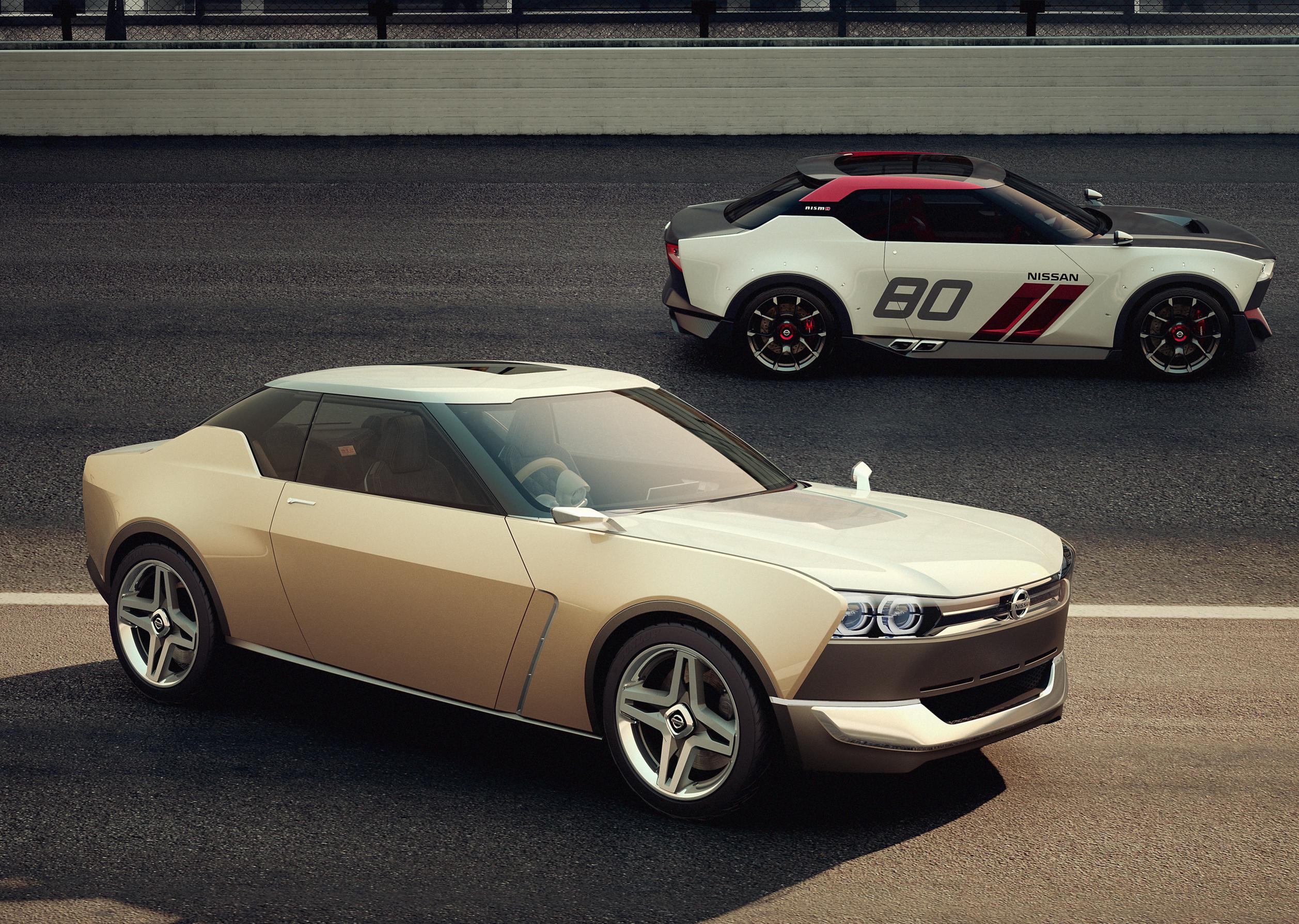| Pros | Cons | ||
| ✓ Still looks great after all these years | ☓ Fussy infotainment system | ||
| ✓ The Recharge is stunningly quick | ☓ Tight third row | ||
| ✓ Safety tech (obligatory mention) | ☓ Expensive (but there are cheaper XC90 variants) | ||
| ✓ If you want to just “get in and drive”, this is the car for you |
Overview: The Volvo XC90 is a graceful and surprisingly quick family companion.
It’s been nearly three years since the last time I properly reviewed this svelte, Swedish family hauler, and it’s good to be back. Not only because the latest Volvo XC90 is still a thoroughly pleasant car to look at, but because it’s just so nice to drive. It’s comfortable, it’s luxurious, it’s easy to live with…and the top-end Recharge model is remarkably quick when you do feel the need to get a move on. In short, if you’re looking for an elegantly styled family hauler that looks after you and isn’t frustratingly complicated to operate, the XC90 is still a fantastic option.
That said, there is an elephant in the room: This car’s nearly ten years old. Of course, Volvo has put the effort in to keep it fresh, giving it a mid-cycle update for the 2020 model year. Beyond that, 2022 and later models got a larger 14.9-kWh (usable capacity) battery pack, solving one of my biggest criticisms on my last go-around, improving the feasible driving range to about 33 miles.
There are still plenty of areas where this car shows its age, though. The XC90 has a cramped third row should you need to fully utilize it as a family hauler, the infotainment system is fussy and obscures away most of the controls a keen driver would want, like drive modes, and going down the options list can really inflate this car’s price to stomach-churning heights. For example, this XC90 Recharge Ultimate Bright model with a Bowers and Wilkins premium audio system and 4-corner air suspension will set you back $85,495.
Any changes for the 2024 Volvo XC90?
While we technically have a 2023 model to test here, everything is still relevant to the 2024 model as well. Volvo’s three-row SUV largely carries over to the new model year unchanged with only minor shuffling among the car’s trim options. The Dark theme — a stealthier option that contrasts the ‘Bright’ model and its chrome trim pieces — is gone for 2024.
Pricing doesn’t change much, either: The B5 Core is $100 higher ($57,195 to start, versus $57,095 for 2023), while the rest of the range shifts by up to a couple hundred dollars in either direction. All-wheel drive comes standard with every Volvo XC90, no matter which powertrain and trim you choose.
Performance: Standard AWD and multiple powertrain options keep the XC90 competitive
For the 2022 model year, Volvo updated its engine lineup to include a 48-volt mild hybrid system on the non-Recharge models. The base B5 model uses your standard 2.0-liter turbocharged engine, putting out 247 horsepower and 258 lb-ft of torque. A mid-range B6 powertrain is still available, bumping the output up to 295 horsepower and 333 lb-ft of torque. If you want the quickest option, however, you’ll definitely want to step up to the Recharge, if your budget can stretch to one.
The turbocharged, supercharged and plug-in hybrid model is by far the most powerful model, putting out a combined 455 horsepower and 523 lb-ft of torque. One of the key aspects of Volvo’s relatively unique approach to the Recharge is potent, linear acceleration from the moment you stamp on the accelerator. With the electric motor filling in the gaps off the line and forced induction kicking in through the higher reaches of the rev band, 0-60 comes up in a surprisingly snappy 4.5 seconds. As family SUVs go, the XC90 Recharge is a gratifying sleeper — to the consternation of that teenager in a certain turbocharged sports sedan riding your bumper. Yeah, he won’t know what hit him when you pull away from the next light.
Despite the larger battery and extra grunt, though, I maintain the current-gen Volvo XC90 is absolutely not a sports car.
It’s perfectly competent and safe, of course, with well-weighted steering and a sorted chassis. Getting the air suspension also helps for a cushier ride, even if it costs an extra $1,800. Push the XC90 hard, though, and you’ll notice a serious amount of body roll as the car’s 5,000-plus-pound curb weight rears its head.
The Volvo’s charm still lies in just how straightforward the whole experience is. You don’t have to fuss with setting the suspension firmness and the transmission aggressiveness and the throttle response up just so. You can get in, blip the Orrefors crystal shifter into drive, and get on with your day.
The XC90 does still technically have drive modes, while you also have some control over how you want to use the car’s all-electric capability. Compared to some of its rivals, though, the five available modes are almost there on sufferance, as you have to dig through the infotainment settings to actually reach them. Unless you tell it otherwise, the XC90 will start in “Hybrid” mode by default, though you can switch it to drive in EV mode using the “Pure” setting, dial up some extra gusto with “Power”, or shift toward a more surefooted setup for slippery conditions using the “Off-road” or “Constant AWD” settings.
Like many other SUVs in its class, a properly equipped Volvo XC90 can tow up to 5,000 pounds (B5 models can only tow 4,000). Fuel economy lands firmly in the “decent” category given its PHEV status, managing up to 27 mpg per EPA figures. It’s full-electric rating stands at 58 MPGe, which is slightly better than the BMW X5 xDrive45e.
Interior and Features: Low-stress, low-fuss
The second-generation Volvo XC90 brought us a downright wonderful interior when it first debuted, featuring high-quality materials and a soothingly minimalist layout. That still holds true for the 2023 and 2024 models. You can get leather seats or a wool blend which we have here, while the dashboard is finished in pleasing wood, stitching and soft-touch surfaces.
Volvo’s design and engineering teams did put some thought into hard buttons for your major controls. However, that “minimalist” comment cuts both ways, as I mentioned with the drive modes and the climate controls as well. You will have to use the 9.0-inch, portrait-oriented screen to dial in your settings, use the 360-degree camera system or get into any other applications you may want.
You do get Apple CarPlay and Android Auto as standard fare and a Wi-Fi hotspot is optional. The outstanding 1,400-watt, 19-speaker Bowers & Wilkins system makes the Volvo XC90 an even more pleasant commuter, though it is another pricey $3,200 option. Most of the XC90’s other controls are fairly straightforward, including the quirky twist-style starter button positioned behind the gear selector.
It goes without saying, but Volvo’s dogmatic approach to safety also shines through in its flagship SUV.
Not only is the car an IIHS Top Safety Pick+ recipient (again), but its standard suite of driver assistance technology will see you right for years and years of commuting and family hauling duties.
While legroom is plentiful in the front row and you even get nice touches like power-adjustable seat bolsters and thigh support, things get less rosy the farther back you’re sitting in the XC90. Second-row passengers do get their own climate controls and two USB-C ports, but the third-row occupants only get a cupholder on each side and a bit of storage. By sheer numbers, those in the far back only get 36.3 inches of headroom and 31.9 inches of legroom, so the space really only works for children.
Thanks to the relatively boxy shape, though, the Volvo XC90 does fare decently well in terms of cargo volume. You get up to 85.7 cubic feet of hauling space with both second and third rows folded, 41.8 cubic feet with just the third row folded and 15.8 cubic feet with all seven seats in place — all competitive figures, even against newer midsize SUVs like the Genesis GV80 and BMW X5.
Verdict: The XC90 is still a great companion that will look after you
After a week’s commuting with the 2023 Volvo XC90 Recharge, I still have a soft spot for this car. It’s an exceptional daily driver, point-blank.
As more cars are crammed with technology and get frustratingly complicated to operate, Volvo’s iconic family SUV is just a pleasant experience all around. With a 4-year/50,000-mile bumper-to-bumper and powertrain warranty and three years/36,000 miles of complimentary maintenance, owning one shouldn’t be a massive headache compared to some of your other options in this segment.
As much as I loved driving the Recharge, however, I don’t think you need to rush out and buy one, unless you really want to spend $85,000. The standard B5 or B6 model will still pull commuter duty just fine for at least $15,000 less. You can save even more money if you’re willing to compromise on some features.
If I bought a Volvo XC90 with my own money, I’d aim for the B6 AWD Plus model for $64,495. That gets you most of the way there on features while saving you a cool twenty grand to put toward running costs or a nice vacation.
One other important consideration: The 2023 Volvo XC90 Recharge does not currently qualify for the redesigned federal EV tax credit, despite being a plug-in hybrid. It doesn’t undergo final assembly in the U.S. and uses batteries sourced outside North America (South Korea’s LG Chem and China’s CATL, specifically), so you won’t get a tax break should you go in on the Recharge.
What about a new XC90 or the electric EX90?
Beyond just reviewing the XC90, I want to address a couple questions we often get about this car. Namely, “Is the XC90 still worth it against the new EX90?”, and “When will there be a new XC90 (or is one coming at all)?”
I’m paraphrasing, of course, but it’s worth covering both questions in the context of the long-running XC90 SUV.
While we haven’t driven it yet, the brand-new Volvo EX90 is a far more modern vehicle, since it’s just getting ready for an early 2024 launch. Again, it may not qualify for the full EV tax credit, since it uses a CATL battery (as does the related Polestar 3). Volvo plans to build North American market versions at its South Carolina plant, though, so there’s a chance you could get a partial credit if you want to go the fully electric route. That said, EX90 pricing may start more or less where the XC90 stops, so it will be an expensive proposition.
To that end, Volvo will most likely forge ahead with a next-generation XC90, despite some conflicting reports on the matter. The automaker noted it would sell the EX90 alongside the XC90 when it revealed its all-electric SUV in November 2022. With the pricing disparity between the two models, Volvo and many other automakers will likely invest in at least one more generation of ICE (combustion) vehicles before fully switching to electric models.
According to most recent reports, we may see a third-generation Volvo XC90 emerge next year, with a launch date set for 2025. That meshes with the brand’s current strategy, which does continue the current XC90 model into the 2024 model year.






















